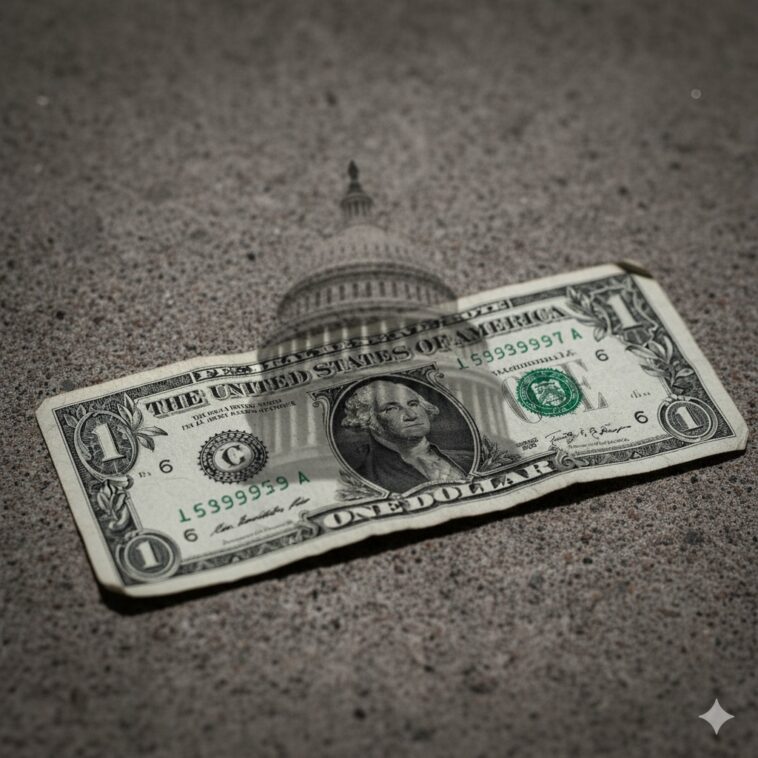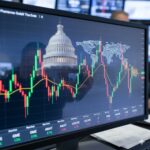A sharp decline in the U.S. dollar this week, fueled by the political drama of a government shutdown in Washington, has put the greenback on track for its worst annual performance in over two decades.
Washington Gridlock Hits the Greenback
The currency market is in a bit of a frenzy right now. Traders and analysts are keeping a close eye on the dollar index—a crucial gauge of the dollar’s strength against a mix of six major currencies, including the euro and the yen. On Wednesday, it dipped another 0.1%, landing at 97.71. While that might seem like a minor shift, it actually pushes the dollar’s year-to-date decline to a staggering 10%. If this trend continues, it would mark the biggest annual drop for the U.S. dollar since 2003, when it plummeted by 14.6%.
So, what’s causing this? Well, it’s yet another failure by U.S. lawmakers to agree on a short-term spending plan, leading to yet another government shutdown. This isn’t exactly a new storyline in Washington, but the stakes feel particularly high this time around. The political tug-of-war has seen Democratic leaders, like Senate Minority Leader Chuck Schumer and House Minority Leader Hakeem Jeffries, focusing on extending enhanced Obamacare tax credits. On the flip side, former President Donald Trump has threatened “benefit cuts for large numbers of people” if a deal isn’t struck. It’s a classic standoff.
The Shutdown-Dollar Historical Link
For those who keep a close eye on currency trends, the connection between political turmoil in D.C. and a weakening dollar isn’t exactly a shocker. “Historically, shutdowns have been linked to a softer USD, especially when compared to safe-haven currencies” like the Japanese yen, Swiss franc, and, of course, the euro, explained Daniel Tobon, a well-respected FX strategist at Citigroup.
Tobon believes that the current “USD pessimism” in the market—the feeling that the dollar is simply too strong given the global economic situation—means that any extra political instability in the U.S. only adds to the downward pressure. It’s like giving a nudge to a boulder that’s already rolling down a hill.
However, there’s an important point to consider. “If the shutdown is resolved quickly, we might not see much change, keeping us within the same ranges we’ve seen in recent months,” Tobon noted. In simpler terms, if Congress can get its act together swiftly, the dollar could very well bounce back from this latest hurdle.
Gold’s Glittering Response
One of the most striking effects of the dollar’s decline is its impact on gold. Since gold is priced in dollars around the world, a weaker dollar makes it more affordable for those using other currencies, which in turn drives up demand.
What’s the outcome? Gold futures have surged to a new all-time high, soaring past the $3,900 per ounce mark. This is a classic example of a flight-to-safety trade, clearly indicating that investors are moving away from paper assets—especially currencies linked to politically unstable governments—and opting for something more tangible.
“When you see gold breaking through these psychological barriers, it’s not just about inflation or interest rates; it reflects a profound lack of trust in governance,” explained Dr. Anya Sharma, Chief Economist at the Geopolitical Risk Group. “The dollar’s drop isn’t just an economic adjustment; it’s a political statement.” While this may be a subjective viewpoint, it’s certainly hard to overlook given the current figures.
Outlook: The Path Forward
The real question isn’t just how low the dollar might drop this week, but rather where it will land once everything settles down. If this shutdown drags on and starts to noticeably impact U.S. GDP figures—which it definitely will—the argument for a weaker dollar becomes even stronger. Sure, the market has already factored in some political chaos, but it hasn’t fully accounted for a serious economic meltdown.
Until Washington proves it can actually govern effectively, we can expect international investors to play it safe, keeping their money in secure places like gold, the Swiss franc, or the government bonds of more stable economies.



